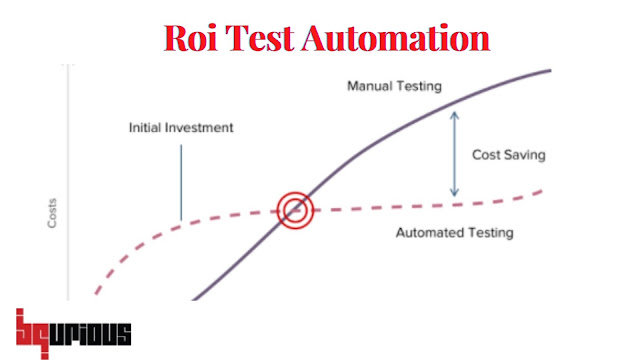A Practical Guide to Salesforce Testing: Bqurious
How to Test Salesforce: A Practical Guide
Salesforce is a popular cloud-based service that's growing rapidly. Salesforce, the world's most popular CRM platform, helps you get closer to your customers and better understand them. It can also help you get more customers and increase revenue. Testing your Salesforce environment is essential due to its increasing popularity. This will ensure that it works well with your other business systems. You can choose which features you need from the software's many customizable options. It is, therefore, more difficult to test effectively because testing teams must go through Salesforce's custom code.
This post will explain the benefits of Salesforce testing. You'll also see the types of testing tools. You'll also learn about common testing challenges and how to overcome them.
Salesforce Testing Automation: Benefits:
Salesforce integration and functionality can be tested using automation. Some of the key benefits include:
Test automation allows you to identify issues early in Salesforce implementations. This helps you identify issues early and prevents them from becoming more serious.
You can increase test coverage with test automation. This will enable you to run hundreds of test cases and increase your test coverage. You'll be able to adjust and handle changes quickly and maintain reliable application performance.
Automation improves testing: This increases your overall testing abilities. Automated testing is faster than manual testing which can be tedious and costly.
Optimized resource distribution: Test automation can help you reduce the time and effort required to run regular tests. You can run repetitive tasks quicker with fewer errors. It will allow you to distribute your resources evenly, reduce business costs, increase productivity, and minimize waste.
Detail reports: Test automation generates advanced reports that give a clear view of your Salesforce application state. These reports make it easier to spot potential risks and address them promptly. Information is provided to stakeholders that can be used to help them make decisions about their future business strategies.
Read More: Mobile testing strategy
Automated Testing Types for Salesforce Testing:
There are two main categories of Salesforce testing. The first is the most important. It consists of types of testing that examine the software's integration with existing systems. This involves testing all-new features, identifying any issues, and verifying they work as expected without affecting existing architecture or other features.
Unit Testing
Unit testing allows you to test even the smallest parts of Salesforce functionality. It allows you to check if even the smallest parts of your application work correctly. You can spot bugs earlier when they are less likely to be fixed. This is a great way of determining if new features work well with your current system.
Integration Testing
Salesforce's versatility allows you to seamlessly integrate with other applications, as mentioned earlier. To ensure the integration is working correctly and meets all functional and reliability requirements, it needs to be monitored and evaluated regularly.
Testing of User Interface (UI).
UI testing must consider both the functionality and appearance of an application. It is "the process of verifying an app's UI works as it should."
End-user experience may be affected by visual changes, as pointed out by testers. Many times, the user interface meets all functional requirements but still has visible defects. These defects not only have a negative aesthetic impact but can also hinder users' ability to use your application. Modern applications need to provide the best user experience possible on a variety of devices and with different specifications. UI testing is becoming more important.
Read More: Selenium Automation Testing
Traditional Automation Tools for Salesforce Testing:
Automation testing tools are available to help you with Salesforce testing.
Selenium, a popular tool that supports many programming languages, is widely used. You can automate testing across multiple operating systems and web browsers. It's not an easy tool to use, even though it's well-known. You will need to have coding skills, which many businesses do not have. Additionally, third-party plugins may be required to improve its functionality.
WebdriverIO, another automation testing tool that is suitable for Salesforce, can also be used. It is JavaScript-based and supports both web and mobile frameworks. It offers features not found in Selenium such as shadow DOM identification and is easier to write test scripts. It is similar to Selenium in that it requires programming skills, making it difficult for non-technical businesses.
Salesforce Testing Challenges
Many Salesforce applications are difficult to test using traditional automation testing tools. Here are some Salesforce characteristics that make automation testing difficult.
Dynamic attributes: Testing UI elements that change constantly can be frustrating. You'll need to spend a lot of time maintaining Salesforce tests without a solid locator strategy.
Contextual pages: Salesforce can be a complex but powerful application. The front-end interface is built on dynamic frames. These frames can be difficult to manage as automated testing tools do not have direct access to the content and cannot quickly identify attributes within the frame. Advanced scripting skills are necessary to achieve this.
Shadow DOMs are used by Salesforce to create components. Automation tools have difficulty finding elements due to Shadow DOMs hiding component properties that are commonly used to identify them.
Salesforce is highly customizable. Traditional tools are unable to manage it because of its flexibility. Salesforce can be customized to meet users' needs. This makes it difficult for traditional tools to test thoroughly and efficiently.
Salesforce integrates with many other applications. It is difficult to determine if the application is receiving and rendering correct information.
Role-based: Salesforce experience varies depending upon the user's role. To capture all user flows, it takes more testing.
Read More: Salesforce Testing Automation
Testim is a great tool for Salesforce Testing
Testim's AI-powered Salesforce test automation solution allows you to manage difficult situations with traditional automated testing tools.
Testim makes it easy to quickly write test scripts. It natively supports Salesforce components hidden behind ShadowDOMs. Additionally, it simplifies custom object management. You can quickly test dynamic pages with AI-powered smart locators. Testim switches automatically to active tabs when an object changes. They can be adjusted to maintain test stability and reduce maintenance effort.
Salesforce uses Testim for automated testing. Salesforce even uses Testim to test integrations and applications.
Read More: End-To-End AI Based Functional Testing: Bqurious
Conclusion
Salesforce is gaining popularity and many companies rely on it. Effective Salesforce testing is essential for a successful business operation. It will help you save valuable resources, increase test coverage, and improve overall quality. Automated testing will allow you to identify potential threats and fix them quickly before they become more serious. Testim, a reliable Salesforce automated testing tool, will make this easier and allow you to grow your business.




Comments
Post a Comment